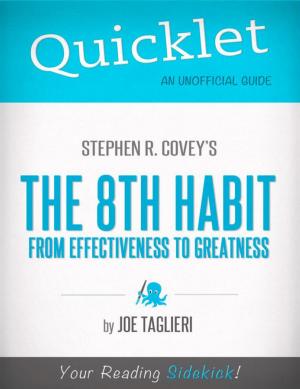Boxer: Training, Grooming, and Dog Care
Nonfiction, Reference & Language, Reference, Guides & Handbooks| Author: | Ian K. | ISBN: | 9781614648741 |
| Publisher: | Hyperink | Publication: | February 29, 2012 |
| Imprint: | Hyperink | Language: | English |
| Author: | Ian K. |
| ISBN: | 9781614648741 |
| Publisher: | Hyperink |
| Publication: | February 29, 2012 |
| Imprint: | Hyperink |
| Language: | English |
ABOUT THE BOOK
Possibly one of the most famous of dog breeds, the Boxer is a descendant of the Bulldog, and is native to Germany. Because it is a descendant of an ancient fighting breed, the Boxer has often been kept as a guard-dog, as well as being used by police and military throughout the world. The Boxer’s athleticism and intelligence meant that for many years these dogs were also trained as hunting dogs.
The Boxer owes its name to the fighting stance the dog takes when battling with its opponents. It stands on its hind legs and appears to box its opponents with its front paws in a stance similar to that of a boxer.
Today, Boxers are popular not for their fighting qualities, but rather their calm and loyal nature. Boxers are intelligent, fun-loving, and great with children, making this breed the ideal family dog. It has also been used as a "seeing-eye" dog due to those same characteristics.
EXCERPT FROM THE BOOK
If your Boxer behaves aggressively, it is usually because of a perceived threat to its own welfare or the welfare of its family. Aggression is not to be confused with bad behavior such as jumping up on people, incessant barking or digging holes in the garden. These are behavioral issues which can be addressed by training.
Dogs are driven by instinct and the environment. Many of the things we ask dogs to do, such as sitting still, are counter intuitive. A successful relationship between a dog and its owner is built upon obedience. When a dog has been trained to know the difference between acceptable and unacceptable behavior socializing with adult humans is not a problem.
Kids
Dogs have a natural protective instinct toward children. The evolutionary process has ensured that dogs are compelled to protect human infants. As with humans, some dogs enjoy the company of children, and some dogs less so. There are numerous factual and anecdotal accounts of the extremely close relationships between dogs and kids...
Buy a copy to keep reading!
ABOUT THE BOOK
Possibly one of the most famous of dog breeds, the Boxer is a descendant of the Bulldog, and is native to Germany. Because it is a descendant of an ancient fighting breed, the Boxer has often been kept as a guard-dog, as well as being used by police and military throughout the world. The Boxer’s athleticism and intelligence meant that for many years these dogs were also trained as hunting dogs.
The Boxer owes its name to the fighting stance the dog takes when battling with its opponents. It stands on its hind legs and appears to box its opponents with its front paws in a stance similar to that of a boxer.
Today, Boxers are popular not for their fighting qualities, but rather their calm and loyal nature. Boxers are intelligent, fun-loving, and great with children, making this breed the ideal family dog. It has also been used as a "seeing-eye" dog due to those same characteristics.
EXCERPT FROM THE BOOK
If your Boxer behaves aggressively, it is usually because of a perceived threat to its own welfare or the welfare of its family. Aggression is not to be confused with bad behavior such as jumping up on people, incessant barking or digging holes in the garden. These are behavioral issues which can be addressed by training.
Dogs are driven by instinct and the environment. Many of the things we ask dogs to do, such as sitting still, are counter intuitive. A successful relationship between a dog and its owner is built upon obedience. When a dog has been trained to know the difference between acceptable and unacceptable behavior socializing with adult humans is not a problem.
Kids
Dogs have a natural protective instinct toward children. The evolutionary process has ensured that dogs are compelled to protect human infants. As with humans, some dogs enjoy the company of children, and some dogs less so. There are numerous factual and anecdotal accounts of the extremely close relationships between dogs and kids...
Buy a copy to keep reading!















